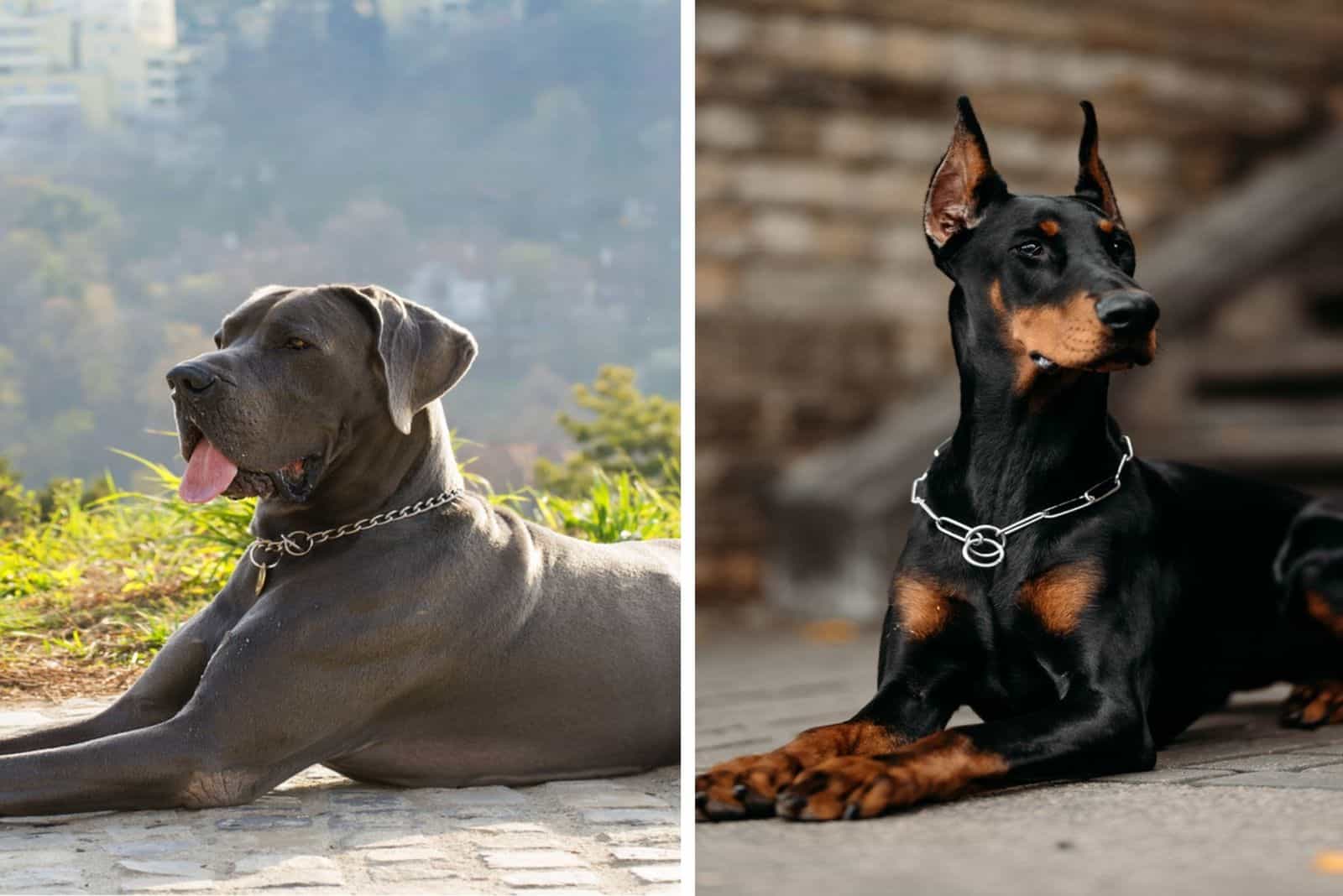It’s probably safe to say that anyone reading this is a fan of big dogs. There’s something about large dogs, a comforting sense of solidness that makes you feel safe and secure.
The Doberman and the Great Dane are both very big dogs, but which is the best? They are almost equal in the American Kennel Club’s list of the most popular dog breeds, at #17 and #16 respectively, out of 202 breeds.
To help you decide, we’re going to examine both breeds to see what we can discover.
As well as looking at the Doberman vs. Great Dane, we’ll try to answer any questions that arise along the way.
Doberman Vs. Great Dane: Temperament
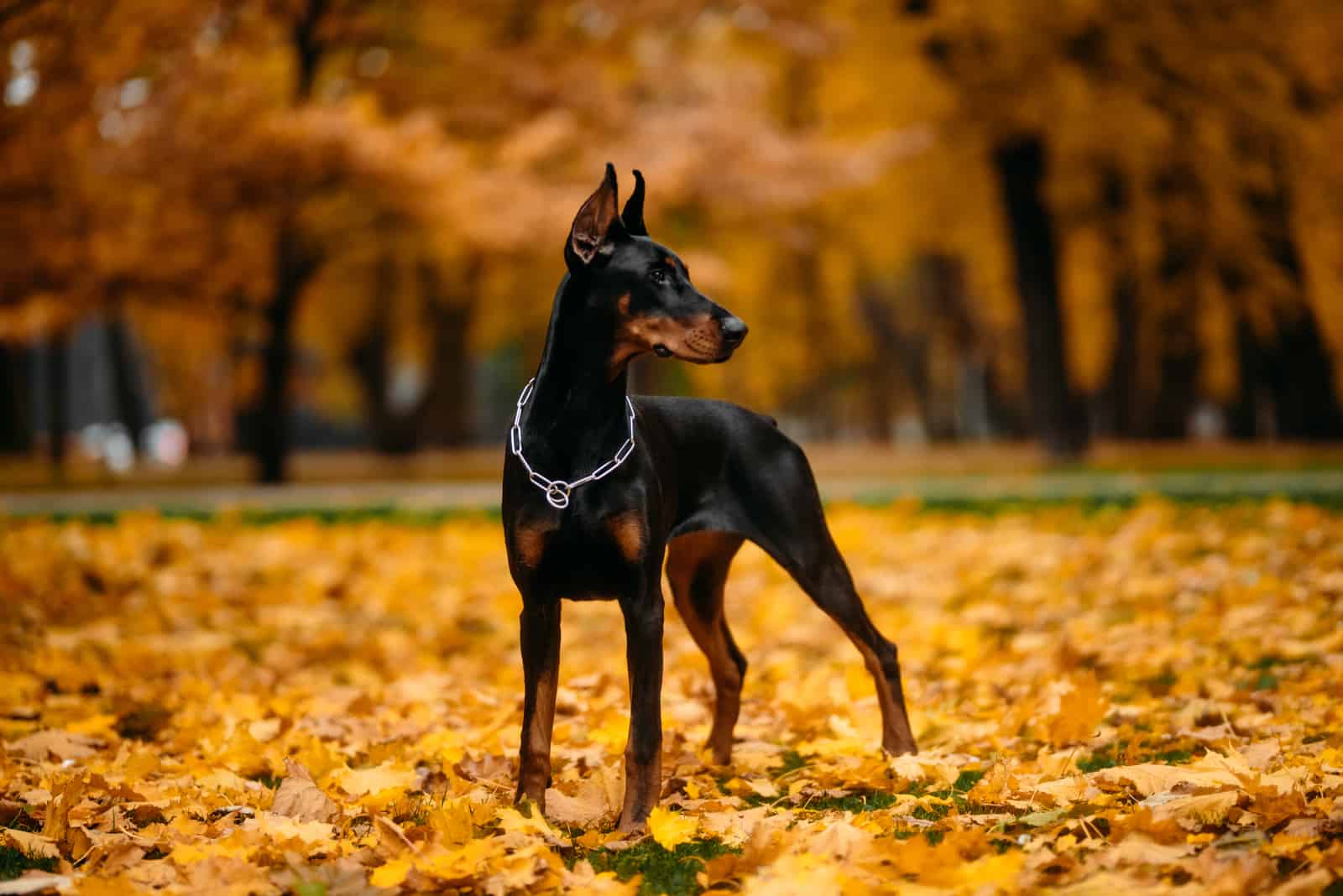
This is an interesting subject, as the Doberman is a very misunderstood dog breed. Looking at the two breeds, most people would assume that the Great Dane is the gentle giant we know and love and that the Doberman is a ferocious guard dog.
However, there’s much more to both of these dogs than you might imagine!
The Great Dane is essentially an affectionate, friendly, placid dog, but it will protect and defend its home when necessary. It’s fairly playful and will happily romp around the yard, especially if kids are involved, as these dogs generally love children of all ages. Even so, there is a chance that small kids can be knocked down simply because of the Great Dane’s immense size!
They are listed as working dogs, and as such, they are pretty energetic. Although they weren’t herding dogs, they do have a tendency to round up kids and small animals, and they might nip at them. This is rarely a serious attempt at a bite, but it can be distressing for the kids involved, so it’s a behavior that needs to be discouraged.
Training can be a challenge if you get a particularly stubborn pup, but on the whole, they are fairly easy to train. These dogs are sometimes initially wary of strangers and may take a while to open up to them. Be sure to introduce any visitors slowly and calmly, letting your dog know that all is well. Once they are happy with this, they will accept them as friends.
Early socialization will help them be more open and accepting of strangers as they will be able to recognize that not everyone is a threat. They’ll also be happy to interact with other dogs and family pets, particularly if they are raised together.
Contrary to what many people may believe, the Doberman can also be a big softy! They are equally as affectionate with their owners and kids, perhaps even more so than the Great Dane. One feature that adds to their reputation as mean, aggressive dogs is the practice of ear cropping, which gives them a fearsome appearance. Uncropped Dobies look completely different, but don’t be fooled: they still retain a strong protective instinct and will guard you and your home from any threat.
When it comes to trainability, the Doberman is streets ahead of the Great Dane. It’s so intelligent and eager to please you that it will learn commands with astonishing speed.
One tip from the experts is that you don’t need to provide your Dobe with any extra protection training. This is a natural instinct, and some Doberman breeders believe that if you give them specialist training as a guard dog, it makes them overprotective and potentially aggressive.
Early socialization for Dobermans is imperative if you want to avoid any unpleasantness when they are around other dogs and strangers. Your pup needs to know that when you are okay around other dogs or people, they must accept them and be comfortable with their presence.
Doberman Vs. Great Dane: Size

Great Danes measure between 28 and 32 inches at the shoulder. As with all breeds, you’ll occasionally find those that fall outside these standard measurements, and it’s not unheard of to find one of these dogs that tops 35 inches at the shoulder.
They usually weigh between 110 and 175 pounds, and as always, females are smaller than males.
By contrast, Dobermans measure between 24 and 28 inches, generally weighing between 60 and 100 pounds. They are muscular, agile, and athletic, while the Great Dane is more ungainly and coarse.
Doberman Vs. Great Dane: Exercise
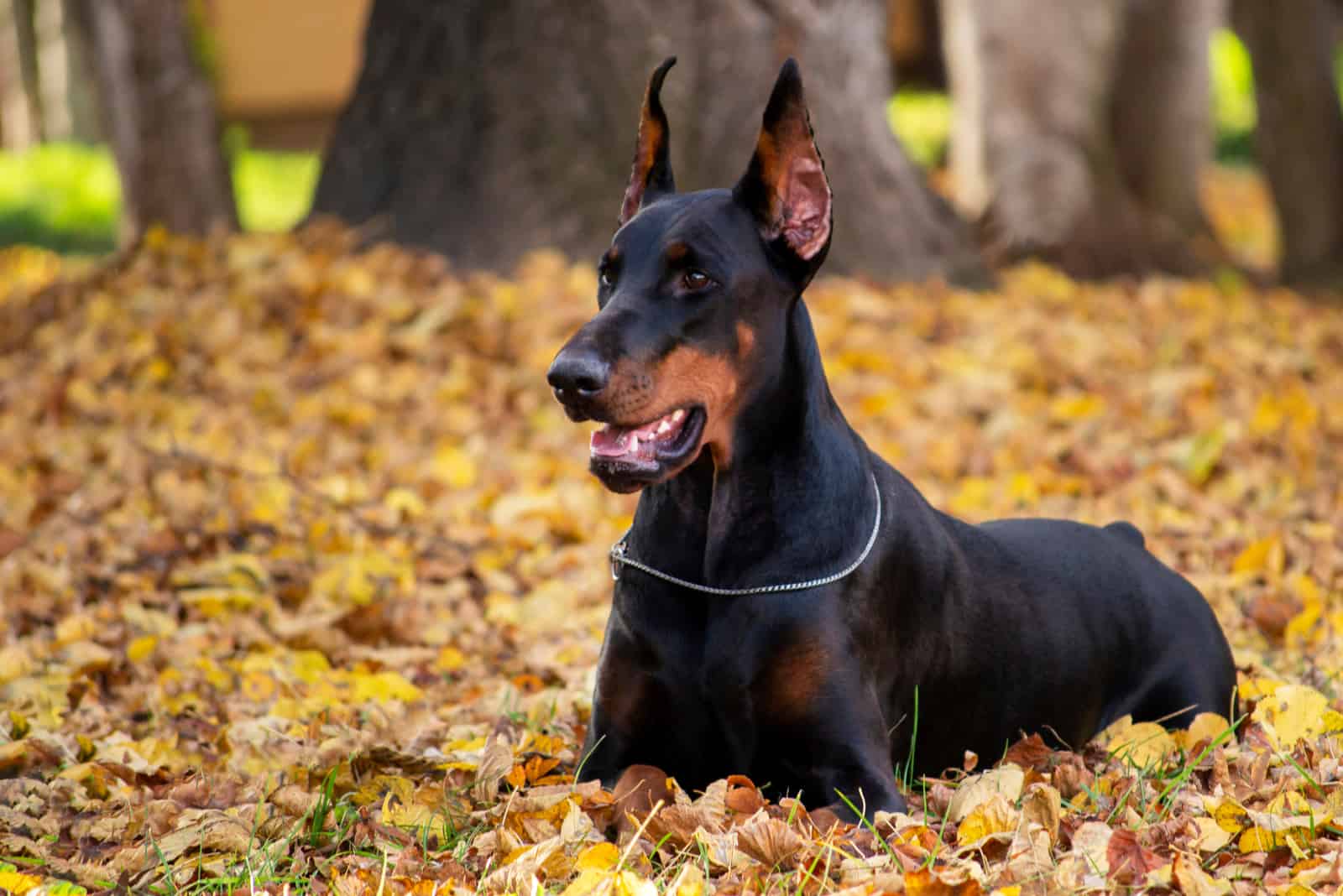
Both dogs need a lot of exercise to satisfy their energy levels and keep them mentally stimulated.
However, you need to be very careful with Great Dane pups. Any exercise needs to be gentle and increased gradually as these dogs grow and develop rapidly. If exercise is too strenuous, it puts a massive strain on their developing joints, which can damage them, leading to pain and problems later in life.
Forced exercise, that is, making them run while on a leash, should be avoided entirely until they are at least 6 months old. Until then, two or three 30 minute walks a day will suffice.
Once they have reached adulthood, their exercise regime should take around two hours per day and could include any of the following: a couple of good long walks, vigorous playtime in the yard or dog park, a swim in the lake (bear in mind that some Great Danes hate water!), and dog agility classes.
Dobermans also need between one and two hours of exercise each day to remain physically and mentally healthy. Ideally, you should take them for a walk, hike, or run every day. They also love to engage in dog sports and anything strenuous, so you could try some of these: fetch, frisbee, a flirt pole (a long handle with a bungee rope and lure attached), agility courses, and swimming.
For mental stimulation, you could use puzzle toys, chew toys, learning games, teaching them tricks, or scent games.
Exercise and mental stimulation are essential for all dog breeds, especially those that are more intelligent and have high energy levels. Without it, they will become bored and overweight. This makes them unhappy and frustrated, which can lead to destructive and aggressive behavior. Extra weight puts pressure on the heart and joints, leading to all manner of health problems. For the Great Dane, this can be fatal.
Doberman Vs. Great Dane: Health
Sadly, all dogs face common health problems, some more than others. So, in our Great Dane vs. Doberman study, what sort of sickness and disease should we expect?
Let’s take a look!
The Doberman
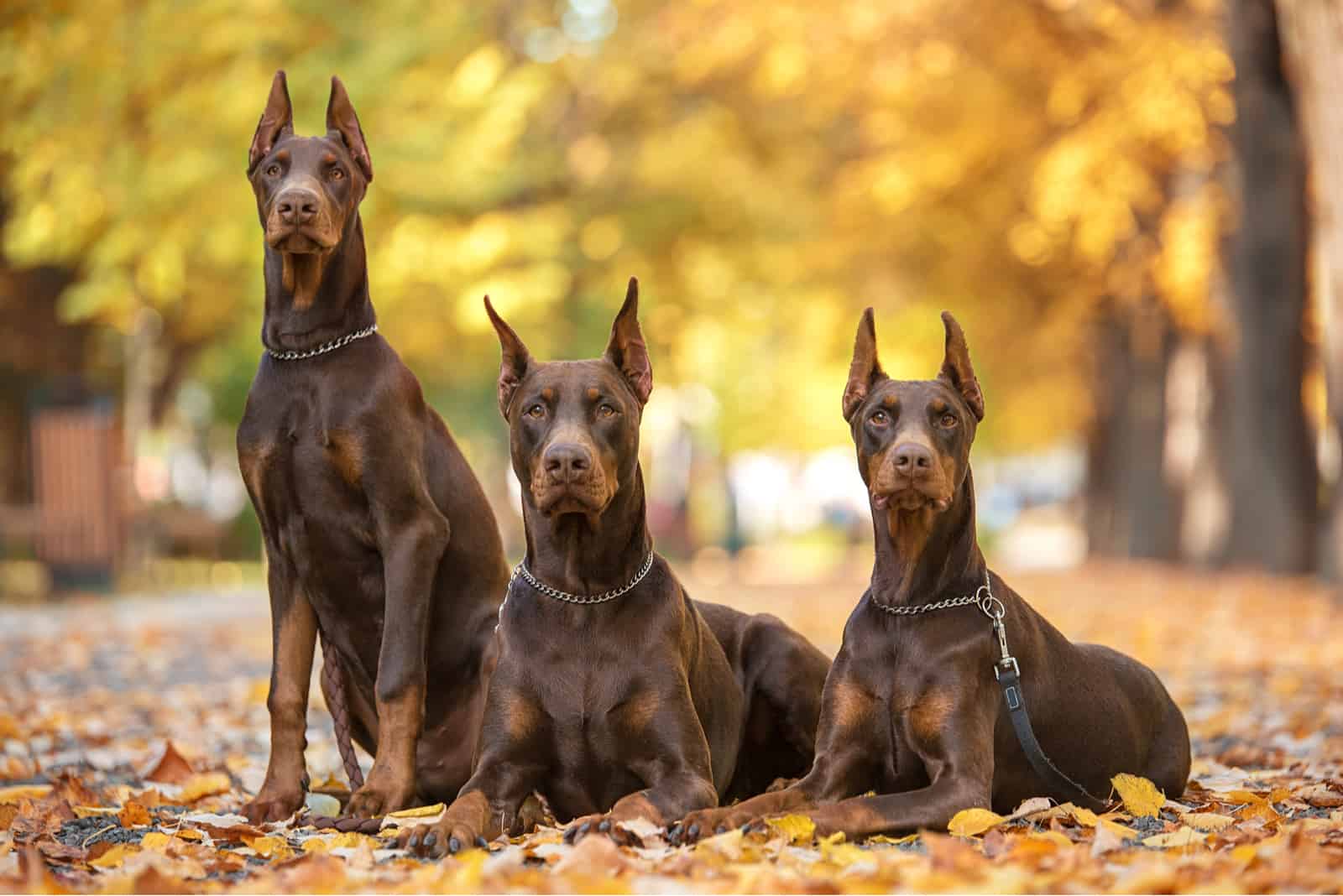
• Hip dysplasia – This condition affects most breeds, although large dogs are more at risk. It occurs due to a poorly developed hip joint that makes the bones of the ‘ball and socket’ grate against each other. In severe cases, surgery is the recommended treatment.
• Von Willebrand’s disease – A blood disorder caused by a white blood cell deficiency. Dogs with this condition are at severe risk of excessive bleeding as their blood is unable to clot properly. This makes surgery extremely dangerous, especially if the condition is not diagnosed beforehand. Dogs with von Willebrand’s disease will bleed heavily when injured. They may also bruise very easily and bleed spontaneously from the nose and mouth.
• Bloat – The medical term for this is GDV or gastric dilatation-volvulus. This is a potentially fatal condition where the stomach inflates and twists around. It affects large breeds with deep chests more than any others.
• Wobbler syndrome – There are at least five different medical names for this condition, but we’ll stick to Wobbler syndrome to avoid confusion! Basically, the spinal cord at the base of the dog’s neck becomes compressed, which affects the neurological system. The unusual name comes from the way it affects the dog: they have difficulty walking and will wobble from side to side.
• Dilated cardiomyopathy – Also referred to as DCM, this is a common disease in dogs that thins the heart wall, reducing the ability to pump blood efficiently. This eventually leads to heart failure. Although the symptoms appear suddenly, it’s likely that the dog has had the condition for many months before these are displayed.
• Certain types of cancer – Bone cancer is one of the more common ones, especially around the areas around the shoulders and legs. Then prostate and mammary cancer for the male and female Dobes respectively.
• Hypothyroidism – An incurable but manageable condition caused by an underactive thyroid gland. The gland doesn’t produce the right level of hormones to allow the body to function properly. This leads to weight gain, lethargy, sensitivity to cold temperatures, lack of enthusiasm for exercise or play, fur loss, and a generally dull coat.
• Eye problems – Including PHPV (persistent hyperplastic primary vitreous). This affects dogs in the fetal stage and can lead to blurred vision, cataracts, and blindness.
The Great Dane
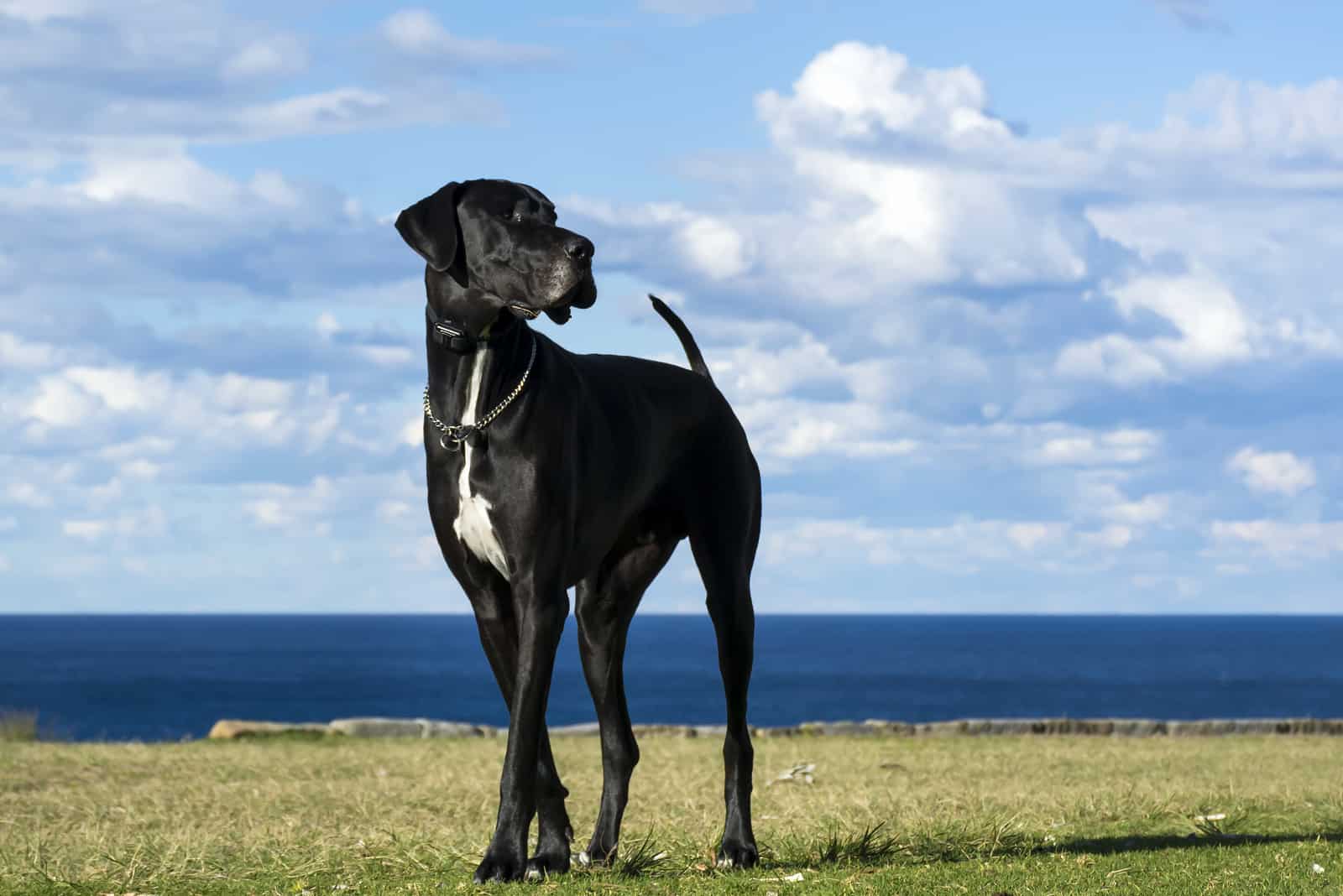
• Bloat – See above.
• Hip dysplasia – See above.
• Elbow dysplasia – Similar to hip dysplasia, but often trickier to deal with as the elbow joint is more complex.
• Dilated cardiomyopathy – See above.
• Wobbler syndrome – See above.
• Eye problems – Including glaucoma, cherry eye, and entropion/ectropion (the eyelids turn inward or outward, causing the eyelashes to scrape on skin or the eyeball).
• Certain types of cancer
• IMGD – Inherited myopathy of Great Danes is a muscle-wasting disease that affects Great Dane puppies at around 6 months. Only 20% of dogs diagnosed with this condition will survive to adulthood.
As you can see, these two breeds share some common health issues, though there are a few that only affect one or the other. It is absolutely essential that you choose a reputable breeder that operates a health screening program to detect these diseases and health conditions! Not only does this reduce animal suffering, but it also reduces the risk of colossal vet bills.
Doberman Vs. Great Dane: Lifespan
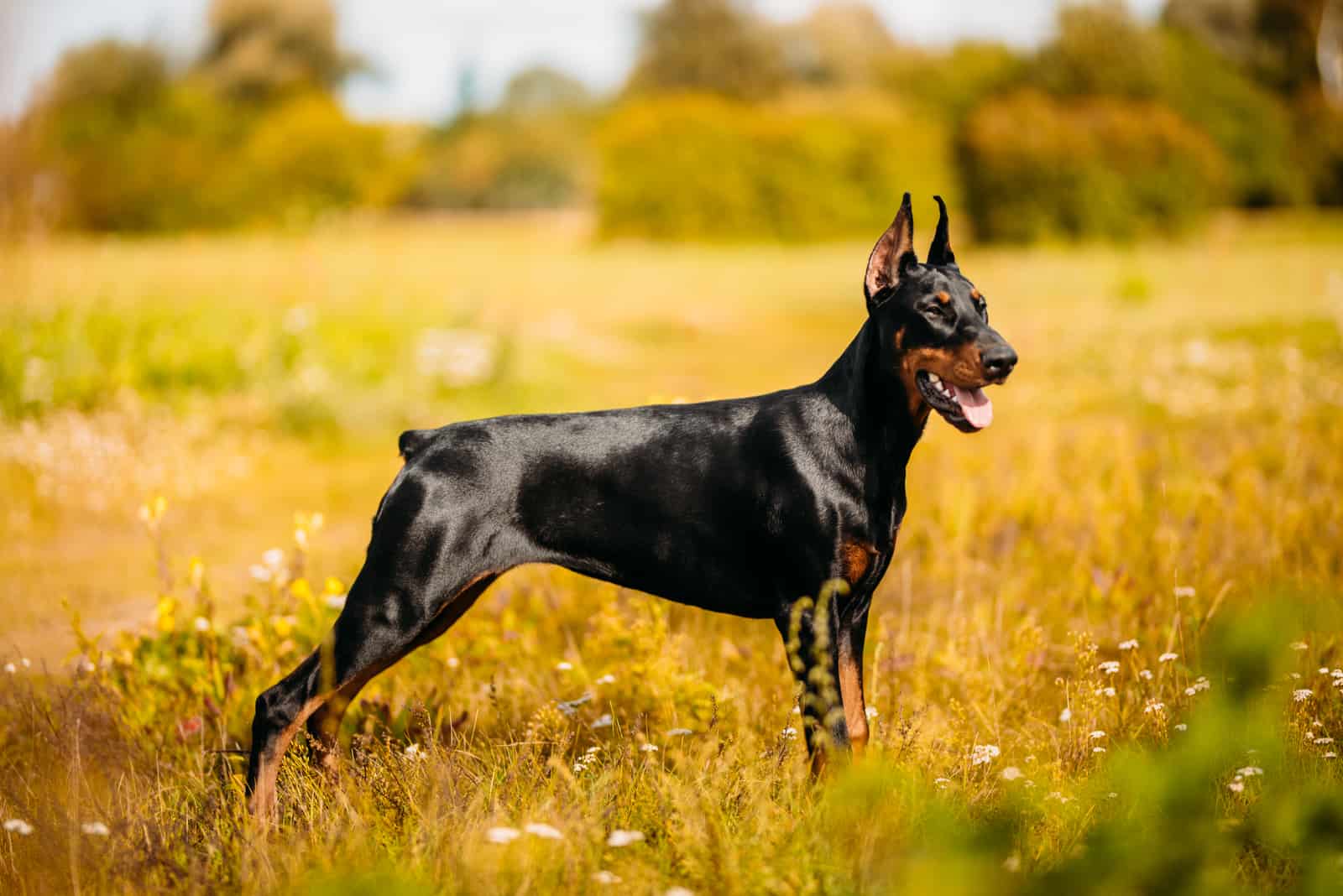
It’s a sad fact that big dogs generally have shorter lives than small dogs. While you can be confident that a relatively healthy Chihuahua can live for up to 20 years, a Boxer or Golden Retriever will usually live between 10 and 12 years.
The good news for Doberman fans is that they match this figure, with a lifespan between 10 and 12 years, even though they are slightly bigger than both of those breeds.
However, things aren’t so great for the Dane when it comes to longevity! They have an expected lifespan of between 8 and 10 years, although some sources put this as low as 6 and 8 years.
Scientists and veterinary surgeons are still puzzled over this apparent paradox (in nature, big animals tend to live longer, while small ones have a much shorter lifespan), but it’s believed that giant breeds of dogs have to grow rapidly as pups, meaning that their metabolism works much more quickly. This makes them age rapidly, bringing on the stresses and strains of old age far too soon.
Also, these giant dogs are prone to a range of serious health issues that can shorten their lives, often as they don’t survive the surgical procedure.
In the Doberman vs. Great Dane debate, the Doberman has the edge here as it generally lives longer.
Doberman Vs. Great Dane: Grooming
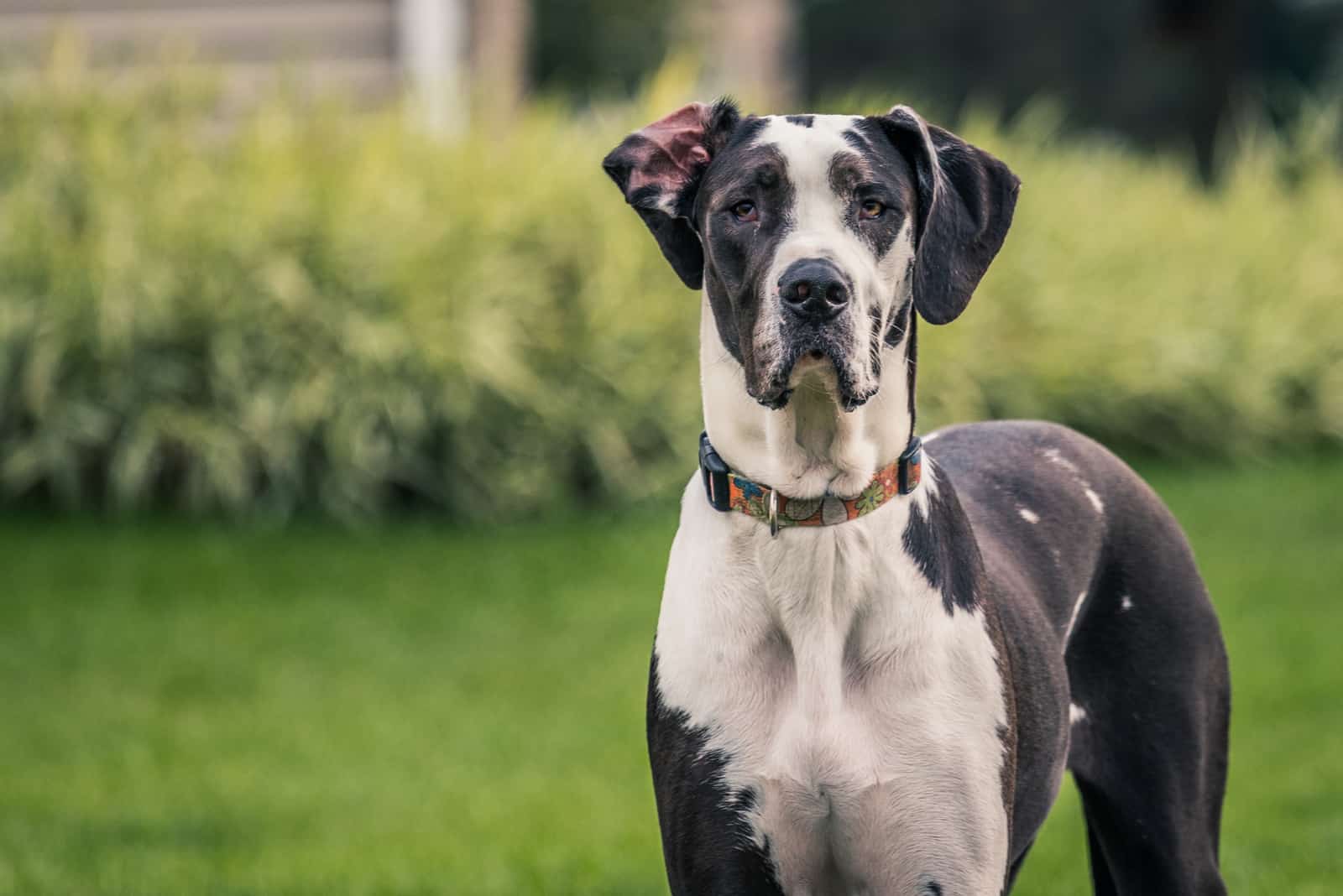
One factor in the Doberman vs. Great Dane stakes that you’ll have to consider is how much time you’ll be expected to spend grooming and caring for your dog.
Bringing any dog into the home is a big decision that will change the dynamic and atmosphere of your home. It’s a responsibility that shouldn’t be taken lightly, and everyone needs to play their part.
Your dog will need grooming fairly regularly. This includes brushing, bathing, clipping toenails, checking and cleaning ears, and brushing teeth. It can be a challenge, even with a small dog, but this is magnified ten times over when you’re dealing with something the size of a Great Dane!
Thankfully, the Great Dane’s grooming needs are low because of its short, smooth, single coat. It needs brushing only once or twice a week and bathing every 6 to 8 weeks. It’s not a good idea to bathe your dog too often as this strips away the natural oils that keep the skin and fur healthy.
Great Danes are considered light to moderate shedders, but hair loss will dramatically increase in spring, so you’ll have to brush them every day for a couple of weeks if you don’t want dog hair everywhere!
Dobermans are similar in that they have smooth, single short coats. However, they have an undercoat around their neck, so they’ll need brushing a few times a week to keep the loose hairs under control. It’s a good idea to do this outside, or the hair will spread around your home.
As with the Great Dane, it’s good to bathe them every 6 to 8 weeks and whenever the need arises. As noted above, bathing too frequently can rob the coat of its natural oils. Always be sure to use a breed-specific shampoo and conditioner.
Bath time can be ‘interesting’ as some dogs aren’t keen. It’s always best to introduce pups to any grooming routine as soon as possible as it helps them to accept that this is the norm. It’s never much fun trying to wrestle with a full-grown adult Great Dane or Doberman that doesn’t like bath time! Obedience training and socialization will help, as your pup will understand what’s expected and trust you.
Aside from keeping their fur clean and healthy, your dog’s teeth, ears, and claws will need attention. Be sure to brush their teeth regularly using a toothpaste designed for dogs (never use ‘human’ toothpaste!) and to check your dog’s ears for dirt, debris, and infection. The ears can be cleaned using a piece of gauze or a cotton wool ball and a squeeze of ear cleaning solution.
It’s important to keep their nails clipped short as these can grow too long, making it painful for the dog to walk. This task can be a real challenge with both of these dogs, the Great Dane more so because of its size, but the Doberman’s black claws make it difficult to judge how much to take off. Cutting too close to the quick is painful and will draw blood.
It’s always best to use clippers designed for dogs, as some of these have a guard that stops you from cutting off too much. Electric clippers grind the toenail down rather than cutting them off, so you might want to try these instead.
Of course, you might want to employ a professional groomer to help you out! One tip that experts often suggest is to avoid laying the dog on its side while clipping its nails. This forces them into a submissive position that some dogs won’t be happy with as they feel vulnerable.
Whichever method or device you use, always reward your dog with plenty of praise and a treat or two when they comply, and you complete the task successfully, as this will encourage them to cooperate in the future.
Doberman Vs. Great Dane: Coat Colors
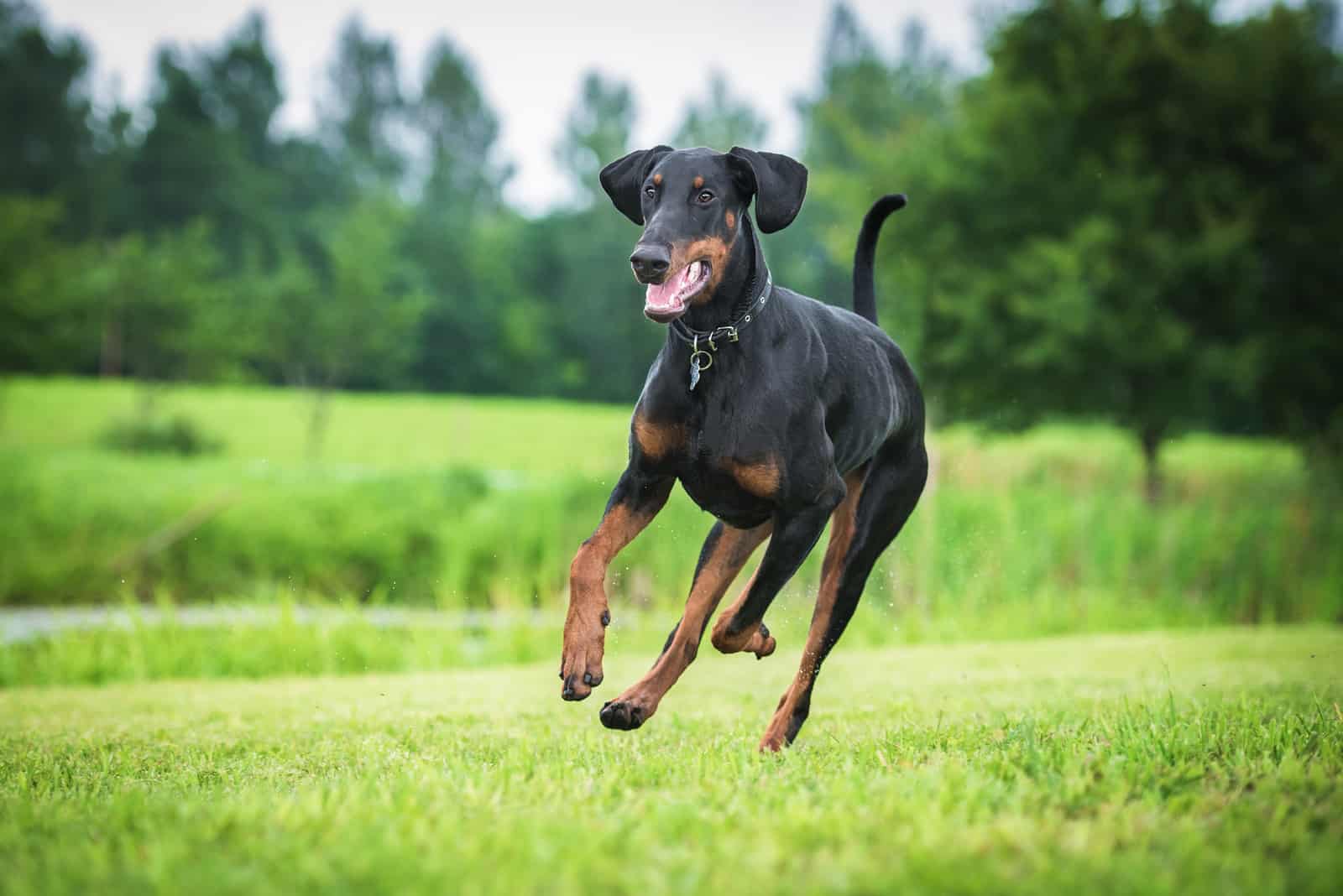
The Doberman comes in many colors, although there are only four standard colors:
• Blue
• Fawn
• Red
• Black
All of these have tan (rust) markings.
There are many other non-standard colors, including white, which is more of a really pale fawn color! This is classed as a partial albino, and as a result, it often experiences a lot of health issues relating to hearing, eyesight, skin allergies, and cancer (some experts believe that they also have behavioral problems).
The Great Dane colors are as follows:
• Black
• Black and white
• Blue
•Brindle (subtle tiger-stripe pattern)
• Fawn
• Harlequin (white base with scattered black patches)
• Merle
• Silver
• White
• Mantle (a black ‘blanket’ over a white base coat)
These are allowed to have black/white markings or a black mask. There are also several other non-standard colors, such as blue and white, mantle merle, blue brindle, and merlequin!
The breed standards are set by organizations like the American Kennel Club (AKC). It’s up to you what color you choose, but you should be aware that certain colors are frowned upon if you place your dog in the show ring.
So, in terms of our Doberman vs. Great Dane quest, the Great Dane wins when it comes to color choice.
Doberman Vs. Great Dane: History
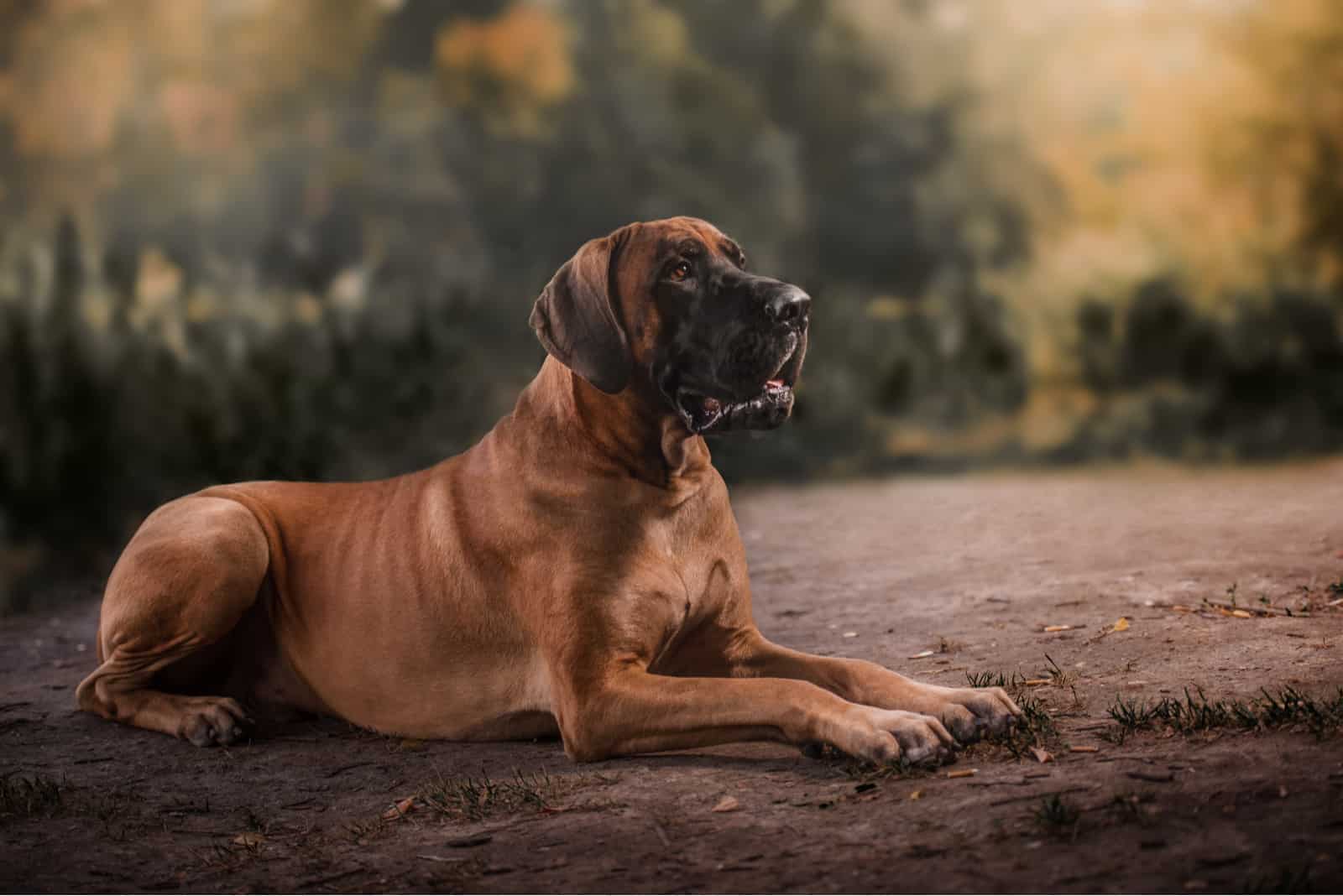
Despite the name Great Dane, these giant dogs are, in fact, German, like the Doberman!
Both breeds were developed in the 1800s, though the Great Dane has probably been around for about 500 years.
This giant dog was a favorite with the German aristocracy, as a carriage dog, a guardian of their country estates, and a hunting dog. Great Danes were capable of stalking and bringing down wild boars. The name Great Dane persists in the English-speaking world, although they are better known as the Deutsche Dogge (German Mastiff) in Germany. They are also known as the Apollo of dogs!
Most are family pets these days, although they are also kept as a means of protection against intruders and robbers.
The Doberman Pinscher owes its name to Louis Dobermann, a German tax collector in the 1800s who wanted a brave and fearsome dog to protect him while out on his rounds collecting money.
Dobermann also owned a dog pound where he gathered strays, and he took his pick of these to develop the Dobie as we know it today. Although it’s not known exactly which dog breeds were used, it’s believed that Louis Dobermann included the Rottweiler, German Shepherd, Manchester Terrier, English Greyhound, and the German Pinscher to create the dog we recognize.
Incidentally, the word pinscher is thought to come from pincer, meaning ‘to grip’ or ‘to seize.’ This refers to the dog’s habit of jumping on its prey and biting it viciously.
Dobermans are still used as guard dogs and protection dogs, though they are widely used by police and military services because of their strength, intelligence, obedience, and loyalty. They also make excellent search and rescue dogs and therapy dogs.
How Much Does A Doberman Puppy Cost?
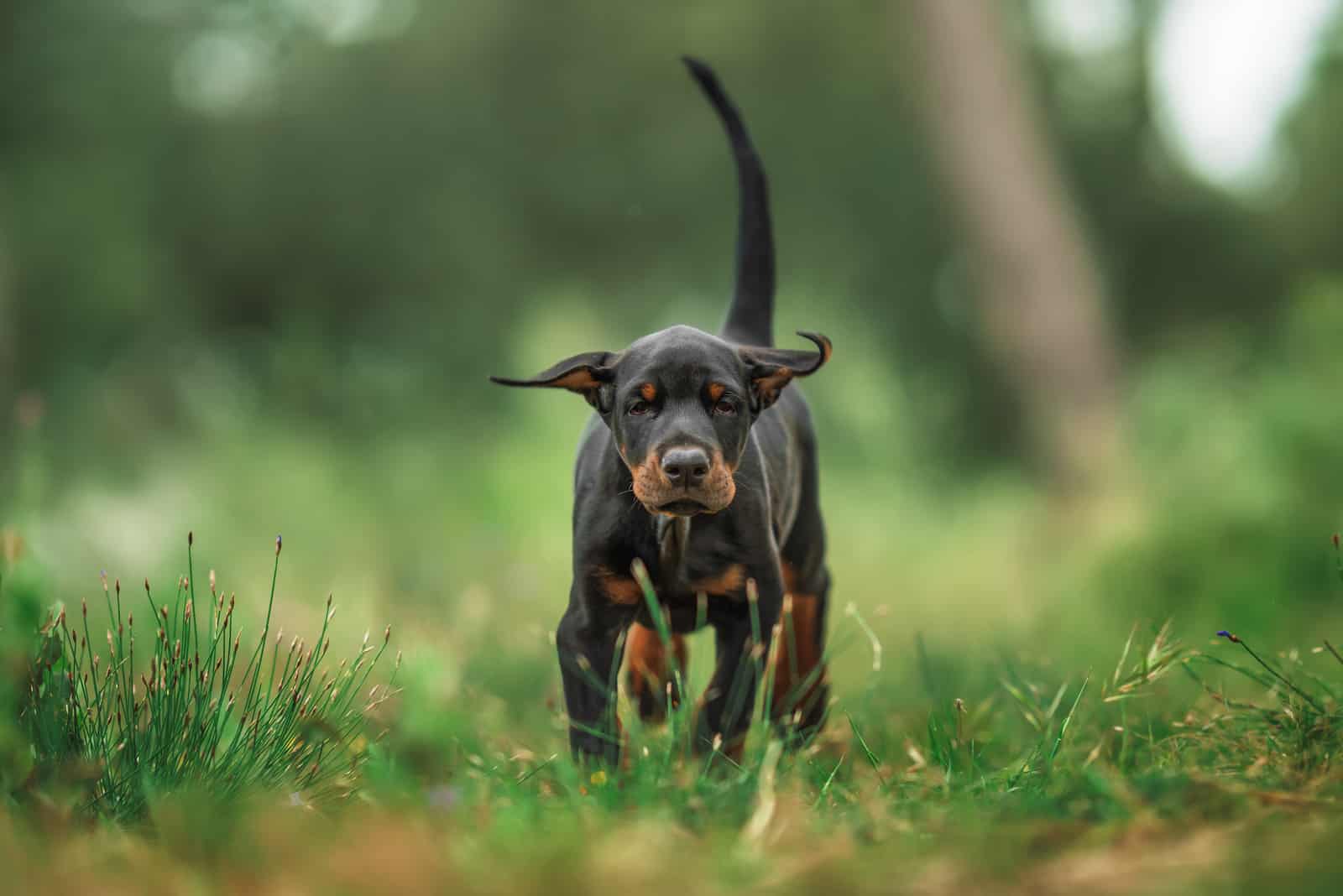
Pet quality pups from a reputable breeder cost between $1,200 and $2,500. For a pup with a superior pedigree or championship bloodline, you should expect to pay as much as $5,000.
Location always affects the price, with breeders in the northern states generally charging more. The sex and color of your pup will also have a bearing, though you should always be wary of anyone selling pups as ‘rare’ colors. Puppies almost always change color as they grow, and thousands of pups are an entirely different color to the one on their registration papers.
How Much Are Great Dane Puppies?
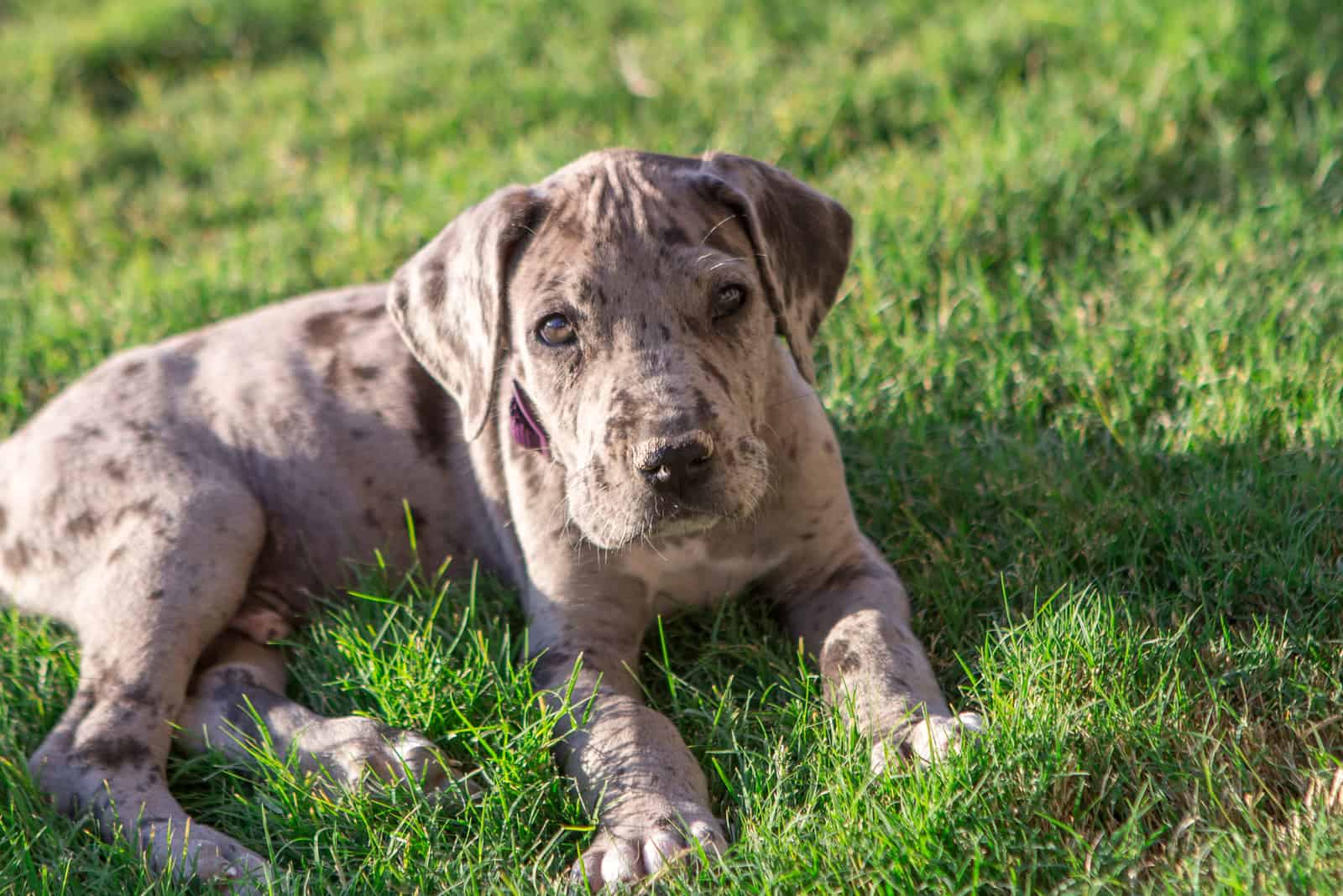
A pet quality Great Dane will cost between $1,000 and $2,000. At the same time, one with a good pedigree from top breeding lines could cost somewhere between $3,000 and $5,000.
You might find Great Dane puppies for sale for around $600, but you should be very cautious before buying. Check out the breeder thoroughly to make sure that they are reputable and trustworthy.
As mentioned above, various factors will affect the price of your pup, including location. If there are several breeders in your local area, the price will generally be lower as there is more competition. However, the reverse is true if you only have one Great Dane breeder in your area.
Great Dane And Doberman Mix
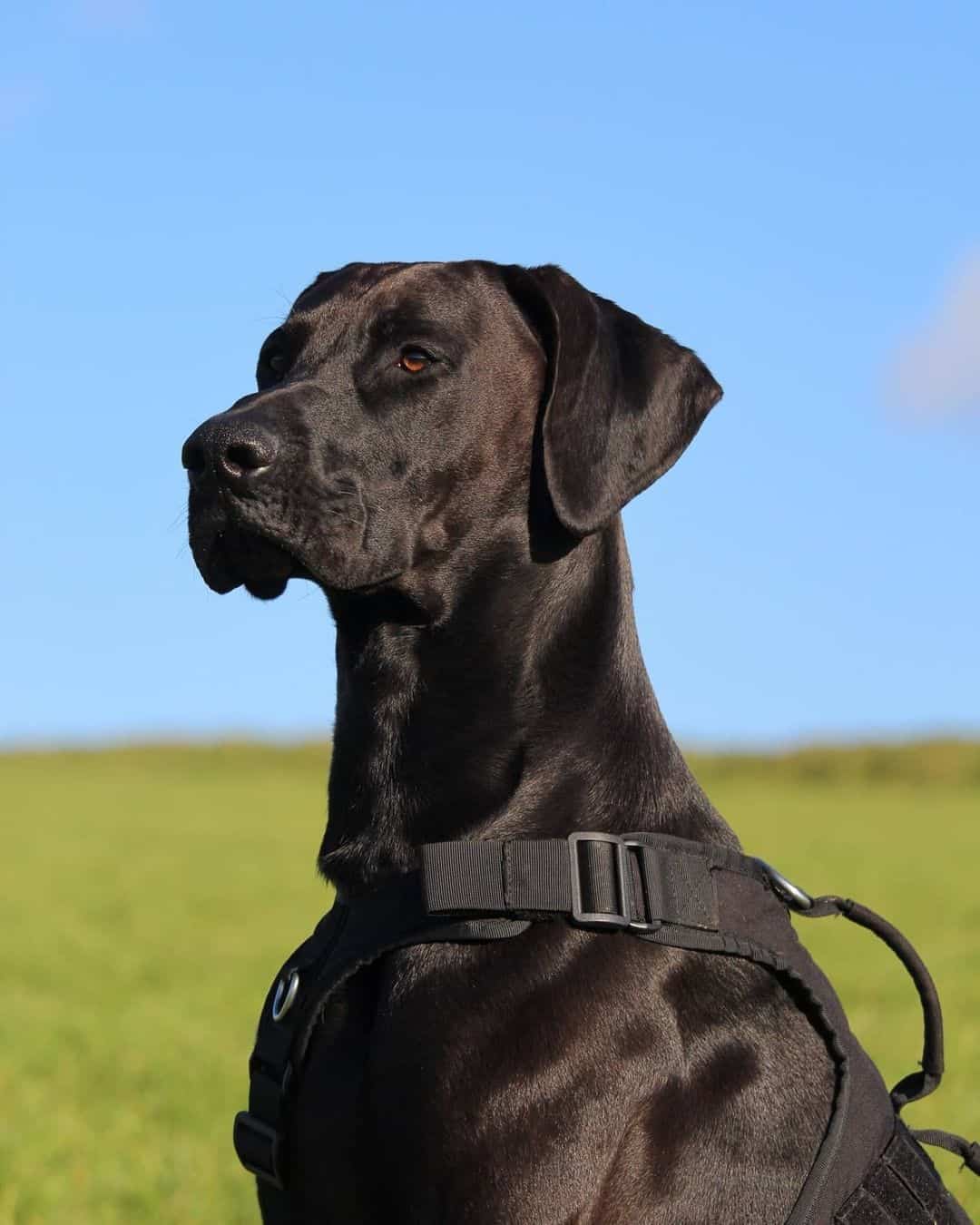
Photo from: @loki.doberdane
Instead of looking at Doberman vs. Great Dane, what about a hybrid of both, known as the Doberdane?
This is a fascinating mix of the two breeds, a designer dog that captures the very best of both.
This pooch really is a gentle giant! Doberdanes are very affectionate, friendly, and loyal, but they are also courageous and protective. They’ll be steadfast and faithful to the end.
As for their size, they’ll measure between 28 and 35 inches at the shoulder and weigh somewhere between 95 and 140 pounds. In appearance, they’ll look like a giant Doberman, which should act as a deterrent to intruders!
Their coats will be black, fawn, brindle, brown, or red.
As they are a crossbreed rather than purebred dogs, there’s a chance that they’ll have fewer health problems and a slightly improved lifespan, living up to 12 years.
The main problem with Doberdanes is finding a breeder who produces them. This is a relatively new hybrid that’s pretty scarce at present. When you do find one, the price is likely to be between $1,200 and $1,600. Be very wary of anyone that charges high prices because this is a rare dog! Check out reviews for the breeder and try to get testimonials from previous customers.
The Verdict
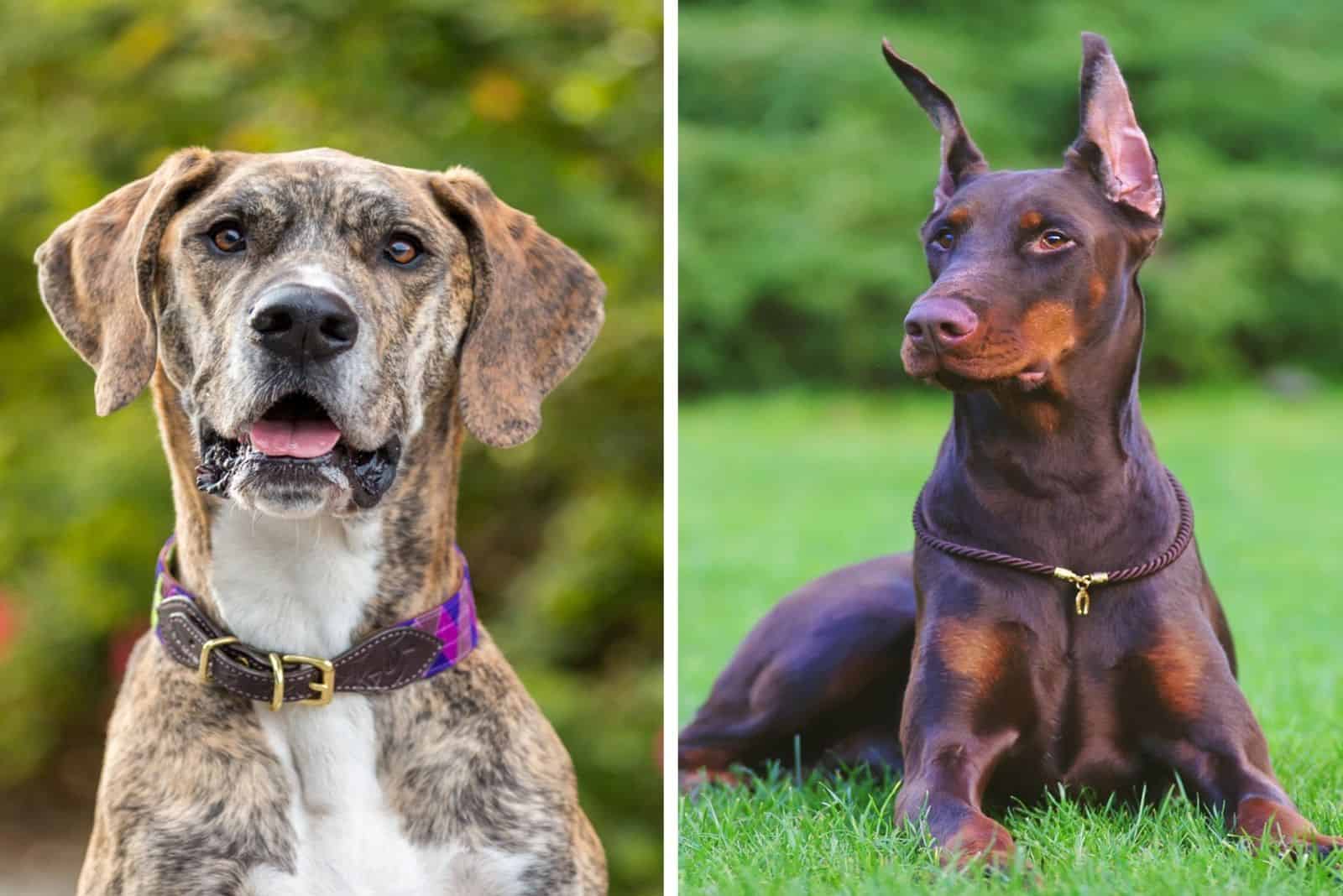
So, now we’ve compared the two breeds in our Doberman vs. Great Dane project, which one do you think is best for you?
Both make great family dogs when they’re matched with the right family! Even so, neither breed is recommended for first-time dog owners. The sheer size of the Great Dane and its potential stubborn streak make these dogs better for those with a bit of experience and a lot of space.
The Dobe needs an owner with a dominant, assertive personality. It’s a wily dog that uses its innate intelligence to trick you into doing what it wants unless you are savvy enough to realize this and keep it in its rightful place. You must make it clear that all other family members are high in the natural order too. As with the Great Dane, it’s a dog that’s best suited to a family or individual who is used to dogs in the home.
The biggest negative factor about the Great Dane is its tragically short lifespan. Having said that, if you use a reputable breeder and keep your pooch healthy, there is a chance that they’ll live happily for 11 or 12 years. Other than this, it’s the Great Dane’s immense size that might put people off. This is one hungry dog, with adult dogs consuming between 6 and 10 cups of food every day (females will be at the lower end). By contrast, Dobermans will eat about half this amount.
Both breeds are natural watchdogs, although the Doberman obviously has a reputation for being naturally gifted in this role.
As for their respective prices, there’s not much in it, whether you’re after a companion or a show-quality dog.
In the end, it will come down to a handful of factors if you want to choose between them:
• Drool – The Great Dane produces pools of the stuff! If you are grossed out by it or too house proud to have your floors and soft furnishings covered in goo, then avoid the Great Dane.
• Size – Both are big dogs, but the Great Dane is considerably bigger and clumsier. They don’t realize this and will try to sit on your lap when the mood takes them. It’s very endearing but can be painful! The Doberman will come for cuddles but is more restrained. For a big dog, it doesn’t take up too much space.
• Longevity – Worth mentioning again, as you want your beloved pooch to be around for a good long time. The Dobe is more likely to live longer.
• Health – Both share similar health issues, but the risk can be significantly reduced if you find a good breeder. However, you need to weigh up the risks of other conditions that affect either breed.
It’s always tough to choose between two dog breeds that you love the look of. Even after reading through this article, you might still have questions and doubts. But it’s entirely up to you! If you can’t decide, you could always compromise and get the Great Doberdane!
